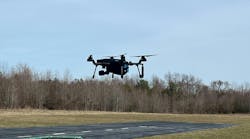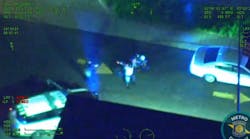The war on illegal guns is going high-tech.
NYPD cops, without stepping out of their vehicles, may soon be able to detect if someone is packing heat — using technology that could greatly reduce the number of stop-and-frisk searches.
The Defense Department is helping the NYPD develop the technology, which detects and distinguishes heat and other radiation emanating from people and objects they are carrying — including guns and explosives, said NYPD Commissioner Ray Kelly.
The technology has proven effective from 15 feet away, although police hope to expand its range to 75 feet.
The Terahertz Imaging Detector is about the size of a fairly large flat-panel TV, and will be mounted in NYPD vehicles.
"It's not like an officer can carry it on a belt," Kelly said.
He described the technology as being "very much in the exploratory stages."
It's called "terahertz technology" for the wavelengths of energy the devices can detect.
The feds are footing the bill for development. Defense Department scientists have been working on the technology for decades in hope of using it to detect bombs and other weaponry.
The device works somewhat like a camera, but instead of picking up light, it reads "a specific form of natural energy emitted by people and objects," Kelly said.
Terahertz waves are capable of detecting differences among skin, fabric, metal and other materials.
"This technology has shown a great deal of promise as a way of detecting weapons without a physical search," Kelly said.
The technology raises significant legal questions for the NYPD, which is already under fire from civil libertarians angry that cops are frisking more than 600,000 people for weapons annually.
Police say they aren't yet sure what legal guidelines they'll need to follow with the device.
"That will be something we're looking at with our lawyers, and something that will be decided down the road," said Deputy Commissioner of Public Information Paul Browne.
The New York Civil Liberties Union would welcome a device that cuts down the number of stop-and-frisks, said executive director Donna Lieberman.
But she worries that it might raise new legal questions.
"We find this proposal both intriguing and worrisome," she said.
"On the one hand, if technology like this worked as it was billed, New York City should see its stop-and-frisk rate drop by a half-million people a year.
"On the other hand, the ability to walk down the street free from a ‘virtual' police pat-down is a matter of privacy," she said.
"We have no idea how this technology works, if it is effective, and what its error rate is."
Republished with permission of The New York Post



